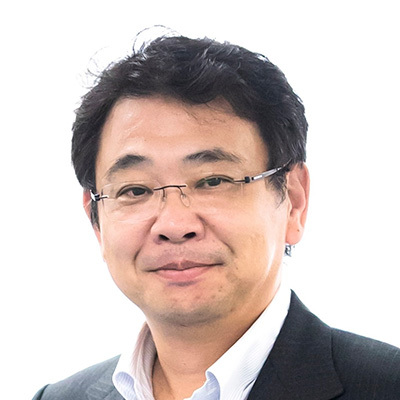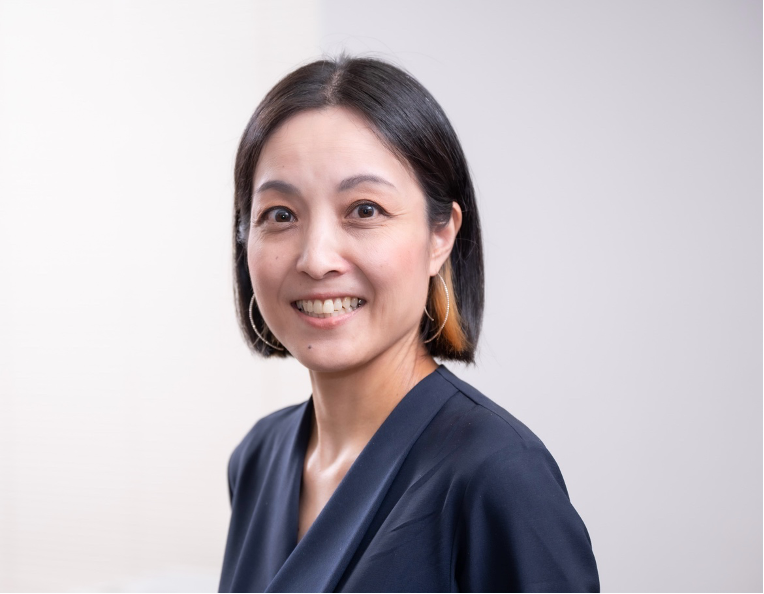45% of online advertising expenditure is not necessarily the optimal solution Dentsu's view of “Japan's advertising expenditure in 2023″[Daikin Yoshitake Katayama, KDDI Tomoko Aizawa, Tetsuya Honda]| Agenda note (Agenda note)

For Agenda Note, we asked three professionals in the marketing field to decipher and contribute their thoughts on “2023 Advertising Expenditures in Japan.'' While different viewpoints were presented from each standpoint, they unanimously pointed out the need to explore the optimal combination of communication as media become more diverse.
Organizational changes are also required to find the optimal combination to achieve the objective.

Head of Advertising Group, General Affairs Department, Daikin Industries
Mr. Yoshitake Katayama
Don't get caught up in media trends or ranking changes. In advertising communication, the optimal combination of media differs depending on the advertising purpose, and whether or not you can create the optimal combination according to the purpose is the key to success or failure in achieving the advertising purpose.
In other words, just because Internet advertising spending has reached a record high of 3,333 billion yen (107.8% compared to the previous year), increasing Internet advertising is not necessarily the correct answer to achieving one's goals. However, it is very important to note that as internet advertising has grown, there has been an increased need to ensure safe and secure advertising and properly address issues regarding advertising quality.
Now that media is diversifying, it is becoming increasingly difficult to achieve goals through advertising (paid media) alone in marketing communications. Rather than thinking only in terms of Internet advertising or advertising, it is essential to build marketing communications by integrating owned and earned media.
In many Japanese companies, “public relations” and “advertising” and “digital advertising” and “analog advertising” are operated by separate organizations. From the customer's perspective, all of these communications come from the same company, and in order to plan and execute media strategies in an integrated manner, we believe that there will be an increasing need to integrate communication organizations within companies.
What is reliable media?

KDDI Brand Communication Headquarters Communication Design Department Manager
Ms. Tomoko Aizawa
I was in the digital marketing department when it became a hot topic in 2019 that internet advertising spending exceeded TV media advertising spending for the first time. This was around the time when I was really starting to feel the momentum of internet advertising and data utilization. The Communication Design Department, where I currently work, was originally the Advertising Department, but it has now been renamed and has evolved from customer communication centered on mass advertising to interactive communication through diversified media. I try to understand media trends from various information sources and data, and I pay attention to “Japan's advertising expenditure” as a reference material that allows me to check historical trends and macro trends.
Looking at this report, we can see that internet advertising has reached a record high, but until last year it had continued to grow in double digits (*Editor's note*In 2020, growth was in single digits due to the impact of the new coronavirus pandemic). So it's in single digits. I felt that Internet advertising was slowly approaching its “peak''.
As the report points out, the presence of CTV (connected TV connected to the Internet) is increasing, and it is a media that we are paying close attention to as we have been branding mainly through mass advertising such as the “au Santaro series”. . Especially when it comes to reaching young people, the value of each reach is different between terrestrial TV and CTV. It is also true that cost allocation is shifting away from mass delivery, as it is necessary to use delivery methods that suit the customer depending on who the message is to be sent to.
On the other hand, with the diversification of media and the rise of AI generation, it is becoming clear that digital advertising is not very high in terms of indicators such as customer trust and viewing behavior. Until now, digital advertising has centered on YouTube and TikTok, but DX is expanding to include CTV, retail media, and OOH (out-of-home advertising). I believe that we must identify media that will expand our contacts and media that are highly reliable, and also seek a balance in terms of cost allocation.
Marketing interest in PESO

Honda Office Representative Director/PR Strategist
Mr. Tetsuya Honda
As someone who helps companies plan their PR strategies, I am very satisfied with the fact that digital radio advertising is increasing in Internet advertising expenditures. Advertisers are becoming more interested in voice media such as podcasts, Voicy, and Radiko, rather than radio as a medium. This is consistent with the fact that event-related advertising expenses have increased since the end of the coronavirus pandemic.
On the other hand, if we look at the marketing and communication field as a whole, the number of owned media such as “Toyo Times'' is increasing, and retail media where retailers are the media companies is also emerging.
Corporate attention in marketing communications has shifted to the optimal allocation of so-called “PESO”. In other words, how to balance the roles of paid (advertising), earned (news, etc.), shared (SNS, etc.), and owned (in-house media), and how to allocate marketing costs. That's it. This report, which accounts for the majority of paid transactions, only reflects one part of the picture.
When considering marketing plans, some large companies have set up specialized departments to ensure that they consider PESO themselves, rather than relying entirely on advertising agencies as in the past. First of all, we need to reform the way we do marketing, such as establishing a mindset of thinking about whether PR can be done through earned media. Japan still has a strong culture of mass advertising, and understanding of the concept is still slow to spread, but the tide is definitely changing.
However, paid is the part of PESO that uses the most budget. In addition to the balance of PESO, it is also necessary to comprehensively consider the optimal distribution of paid payments, such as a combination of digital and analog.
